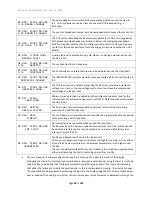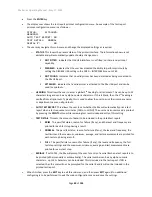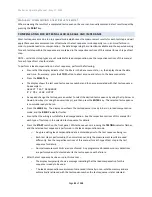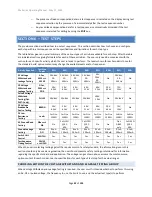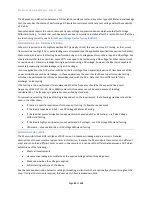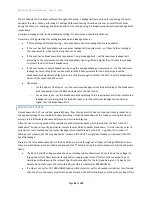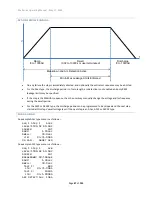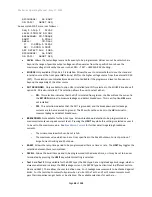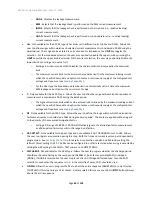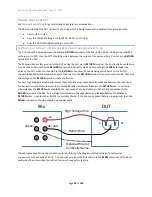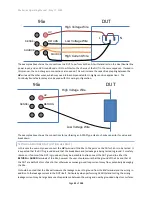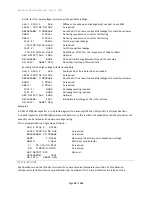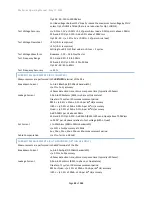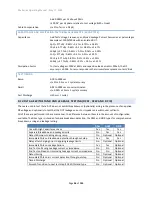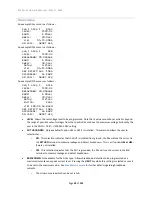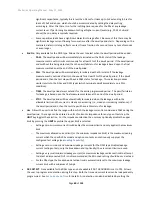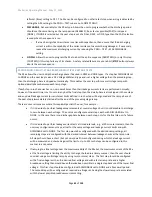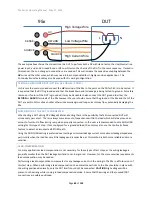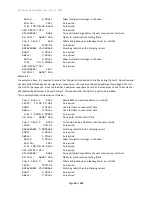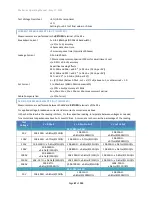
95x Series Operating Manual - May 17, 2022
Page
52
of
155
CHECKING THAT THE DUT IS CONNECTED
When testing a DUT using AC Voltage Withstand testing there is the possibility that a disconnected DUT will
erroneously pass a test. There is always some amount of capacitance within the load which will always cause an
amount of current to flow when properly connected, so the user is recommended to set a minimum RMS or QUAD
current setting in one of the two allowed test limit ranges for the ACW type of step. If not configured for a
grounded load, the user may also use the Continuity Sense feature to detect a disconnected RETURN path.
LEAD COMPENSATION
For many applications lead compensation is not necessary for these types of test steps, as the wiring leakage is
generally smaller than the DUT leakage limit and so can be ignored. However, for the more sensitive requirements
(e.g., the more stringent levels of medical safety leakage testing) and/or when long lengths of wiring are required,
particularly if DUT GROUNDED is set to YES, then lead compensation may be needed.
If the capacitance of loose wiring is to be corrected for and an isolated DUT is being tested, then it is
recommended to use shielding of the
RETURN
wiring rather than Lead Compensation as the capacitance between
loose unshielded wiring is very dependent on the exact routing of the wires.
Performing a lead compensation compensates for the resistive and capacitive leakage currents in the wiring to the
95x in all future runs of this test step. When performing a lead compensation, the normal connections to the 95x
should be in place, with the wiring positioned normally, only the DUT itself should not be connected.
CAUTION
High voltages will be present on the wiring while running in lead compensation mode. Ensure that the wiring and
the (unused) DUT connections are safely positioned.
When performing a lead compensation, the leakage limits are not enforced, otherwise the test step is executed
normally.
EXAMPLES
Example 1 -
A DUT is to have its Line/Neutral power connections tested to its
chassis for “no breakdown” at 2000Vrms/60Hz
using a 1 second ramp and a 30 second dwell. It is known that the DUT leakage is less than 5mArms at this voltage
level and frequency (if this is not known, then start by using 5mArms as the limit and adjust it as needed).
This is accomplished in a single step as follows
–
Seq 1 Step 1 ACez
Only breakdown detection is needed, so use the ACez type
LEVEL:2000.0V 60.0Hz
As required
RAMP: 1.00sec
As required
DWELL: 30.0sec
As required
Lim: 0n-5.000mA
As required
ON FAIL: ABORT SEQ
Example 2 -
It is required to test a 2-conductor cable which has a specification of >100Mohm resistive leakage and <100pF
capacitance at 500Vrms, and a minimum breakdown voltage of 2000Vrms. A decision is made to test for
breakdown using a 1 second ramp and a 1 second dwell time since the requirement does not specify it.
Optionally, the Lead Compensation feature could be used to adjust for the DUT wiring capacitance, allowing
accurate measurement of the 100pF limit. Otherwise, the measurement will include the capacitance of the wiring
between the 95x and the DUT.
All of these tests are accomplished by two ACW test steps in a test sequence
–

